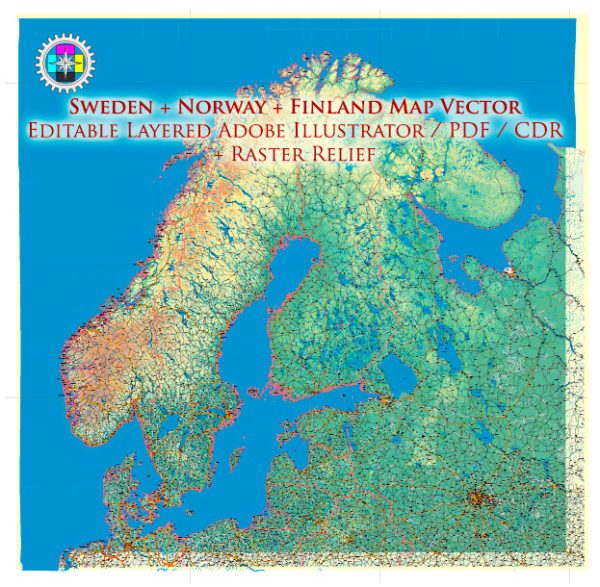The urban development history of Sweden, Norway, and Finland shares some commonalities due to their geographical proximity and historical connections, but each country also has unique aspects shaped by its individual history. Here’s a brief overview:
Sweden:
Medieval Period:
- During the medieval period, Sweden’s urban development was influenced by trade and the Hanseatic League. Cities like Stockholm, founded in the 13th century, grew as centers of commerce and political power.
Renaissance and Early Modern Era:
- Sweden experienced a period of territorial expansion in the 17th century under Gustavus Adolphus. Stockholm continued to flourish, and other cities like Gothenburg were established.
Industrialization:
- The 19th century saw rapid industrialization in Sweden, leading to the growth of urban centers. Stockholm became an industrial and cultural hub.
20th Century:
- Urbanization intensified in the 20th century with the expansion of industries and the rise of the welfare state. Stockholm, Gothenburg, and Malmo became major urban centers.
Norway:
Medieval Period:
- Similar to Sweden, Norway’s medieval urbanization was influenced by trade. Bergen, a key Hanseatic League city, played a crucial role in commerce.
Union with Denmark:
- During the union with Denmark (14th to 19th centuries), Norway experienced limited urban growth. Copenhagen, under Danish rule, became more prominent.
19th Century:
- The 19th century brought a revival of Norwegian national identity. Oslo (formerly Christiania) expanded as the capital, and other cities like Bergen continued to develop.
20th Century:
- Urbanization accelerated in the 20th century. Oslo grew as a political, economic, and cultural center, while other cities like Stavanger and Bergen also developed.
Finland:
Swedish Influence:
- Finland was part of the Swedish Kingdom until the early 19th century. Turku, founded in the late medieval period, was an important city under Swedish rule.
Russian Rule:
- After the Finnish War in 1809, Finland became an autonomous Grand Duchy under Russian rule. Helsinki was established as the capital in 1812.
Industrialization:
- The late 19th century saw industrialization and urbanization in Finland. Helsinki became a hub for education, culture, and administration.
Independence and 20th Century:
- Finland gained independence in 1917. Urbanization continued with the growth of cities like Helsinki, Tampere, and Turku. Post-World War II, Finland experienced economic growth, influencing urban development.
In all three countries, the 20th century saw a shift towards service-oriented economies, technological advancements, and modern urban planning. Today, Stockholm, Oslo, and Helsinki are vibrant, modern cities with well-developed infrastructure, while preserving historical and cultural elements.


 Author: Kirill Shrayber, Ph.D.
Author: Kirill Shrayber, Ph.D.